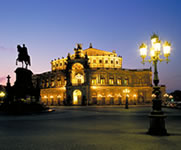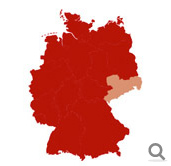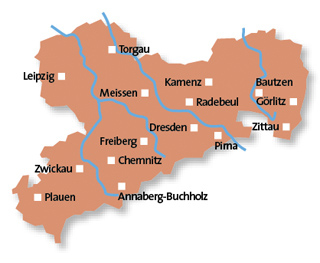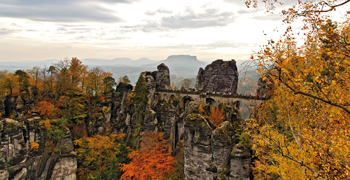
Historical Towns
- Historical towns in Brandenburg
- Cathedral Towns and Cities in Saxony-Anhalt
- The innovative Anhalt-Wittenberg Region
- Enchanting towns in the Harz
- The beautiful towns and cities in Saxony
- Towns and cities of culture in Thuringia
- Beautiful towns of Franconia
- East Bavarian traditional towns
- Alpine towns in the Allgäu
- The eastern Akpine Foothills and their towns
- Towns and villages in the western foothills of the Alps
- Mediterranean towns on Lake Constance
- Towns in the Swabian Alb
- Unspoilt towns in the Black Forest
- Towns for refined tastes in the Heilbronner Land
- Towns in the Odenwald
- Wine towns in Rheinhessen
- Saarland, a region of contrasts
- Romantic towns in the Hunsrück and Nahe Regions
- Idyllic towns and villages in the Moselle Region
- The Ahr Rhine Eifel holiday region
- Wine towns on the Romantic Rhine
- Modern towns and cities in the Bergisches Land Region
- The Lahn Valley and its fairytale towns
- Historical towns in Kurhessisches Bergland
- Sauerland's scenic towns
- Fairytale towns in the Weserbergland Hills
- Majestic towns in the Münsterland Region
- The nine stars of Lower Saxony
- North and East Frisian Islands
- Vibrant Schleswig-Holstein
- Maritime towns along Mecklenburg's Baltic Coast
- Historical Hanseatic Towns
- Germany's Baltic Sea Islands
- The Mecklenburg Lakes
Contact and information
Wine tip
The Saxony wine region
The vineyards along the Elbe may be relatively few in number, but wine has been cultivated here for nearly 850 years because of the favourable climate: some 1,600 hours of sunshine every year together with a constant change from warm days to cold nights yields complex bouquets and superior quality. Müller-thurgau, riesling and pinot blanc are the main varieties, with goldriesling a speciality that is only grown in Saxony.
The vineyards along the Elbe may be relatively few in number, but wine has been cultivated here for nearly 850 years because of the favourable climate: some 1,600 hours of sunshine every year together with a constant change from warm days to cold nights yields complex bouquets and superior quality. Müller-thurgau, riesling and pinot blanc are the main varieties, with goldriesling a speciality that is only grown in Saxony.
History, heritage and the story of porcelain

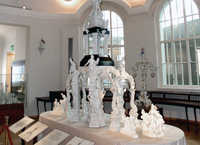
Meissen
The history of European porcelain began in the town of Meissen. 2010 marks the 300th anniversary of the Meissen manufactory, whose products were almost literally worth their weight in gold and remain popular to this day as secure investments. Every piece is crafted by hand in a tradition that continues from the time of Johann Friedrich Böttger. You can watch the artisans at work at the Meissen Porcelain Factory. Meissen is a delightful little town that's well worth a visit in itself. Historical houses and traditional wine taverns with a maze of courtyards compete for your attention under the gaze of Albrechtsburg Castle and Meissen Cathedral.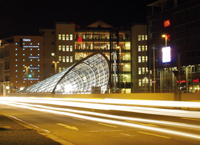
Chemnitz
Chemnitz takes pride in being a thoroughly modern city, dedicated to progress, enterprise and innovation. Cathedrals of industry and an extensive art nouveau quarter provide reminders of its 19th-century prosperity. Chemnitz is also where German expressionist painter Karl Schmidt Rottluff was born. A leading collection of his work is the main attraction at the city's Kunstsammlungen galleries. You might get the impression that Karl Marx also comes from Chemnitz, so prominent is the enormous cast of his head in the city centre. A landmark piece in art history, it is also the world's second-largest, free-standing bust. Chemnitz even bore the name Karl-Marx- Stadt until German reunification. Also from East German times is the annual Begegnungen arts festival, which features concerts, exhibitions and other cultural events.Görlitz
Görlitz, Germany's most easterly town, has undergone a remarkable transformation since reunification. The old quarter, which had managed to escape demolition but not the ravages of time, has been carefully restored to its former glory, preserving the architectural heritage for future generations. The oldest Renaissance building, the Schönhof, dates back to 1526. It is a defining feature of the townscape, together with the 19th-century townhouses, the narrow lanes and the manicured parks. A must for any itinerary is the Altstadtbrücke, the old town bridge from 1298 which links Görlitz with its sister town in Poland, Zgorzelec.Freiberg
Freiberg is Saxony's oldest mining town. The extraction of silver ore brought wealth to the town in centuries gone by. The handsome patrician houses around Obermarkt market still attest to this Golden Age. Today, the Reiche Zeche mine serves as a research centre and training academy for Freiberg University of Mining and Technology. Freiberg is also widely associated with Gottfried Silbermann, the influential German organ maker.Saxony's Elbe Valley
The breathtaking mountainous landscape of the Elbe Sandstone Massif provides the perfect setting for exercise, activity and adventure. It makes the Saxon Switzerland National Park a dream destination for climbers and walkers with its breathtaking panoramic views, much like the Erzgebirge mountains.Paddle steamers and pleasure boats
Sächsische Dampfschifffahrt is the oldest and largest fleet of paddle steamers in the world. Nine historical paddle steamers and two cruise boats offer regular trips along the Elbe river from Dresden.Saxon specialities
Marinated braised beef, potato soup and cream cheese potato pancakes are just some of the culinary delights on offer in Saxony's welcoming inns. At Christmas time, Dresden stollen cake is exported around the world. The spiced gingerbread known as pfefferkuchen, which has been produced in Pulsnitz for centuries, can be sampled at Europe's only gingerbread museum. Saxony's beer is also well worth discovering. The first premium pilsner made according to the German Beer Purity Law came from the Radeberg export brewery.Travel Planner
Select an option...
Romance and charm
The 55km Saxon Wine Route links the wineries and estates of the beautiful vineyard region along the Elbe river. The winery open day on the last weekend of August is a popular tradition and there are major wine festivals in late September.
Food and drink
Dishes of fresh fish, potatoes and vegetables are typical of the cuisine in Upper Lusatia. The region's annual Food and Drink Festival in June and July presents these traditional specialities in selected restaurants.
History and tradition
Torgau is one of Germany's best-preserved Renaissance towns, with the Bürgermeister Ringenhain House of 1596 a period masterpiece. The wall and ceiling frescos are the standout features of its authentically furnished living quarters.
Nature and scenery
Sheer sandstone rocks provide the backdrop to plays, concerts, musicals and operas at Europe's most spectacular outdoor theatre: the Felsenbühne Rathen near Pirna. Its summer programme is a magnet for visitors in the heart of the Saxon Switzerland National Park.




